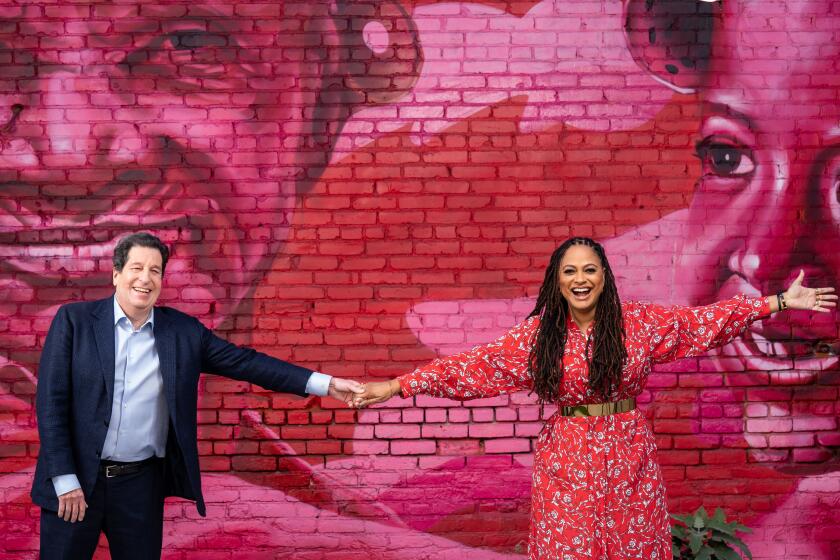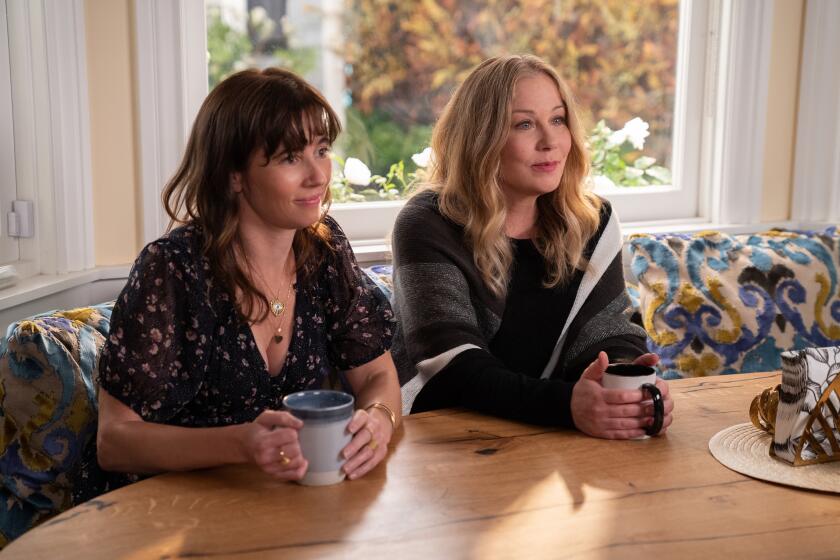New Orleans’ film industry was a ‘secret club.’ ‘Queen Sugar’ blew its doors wide open
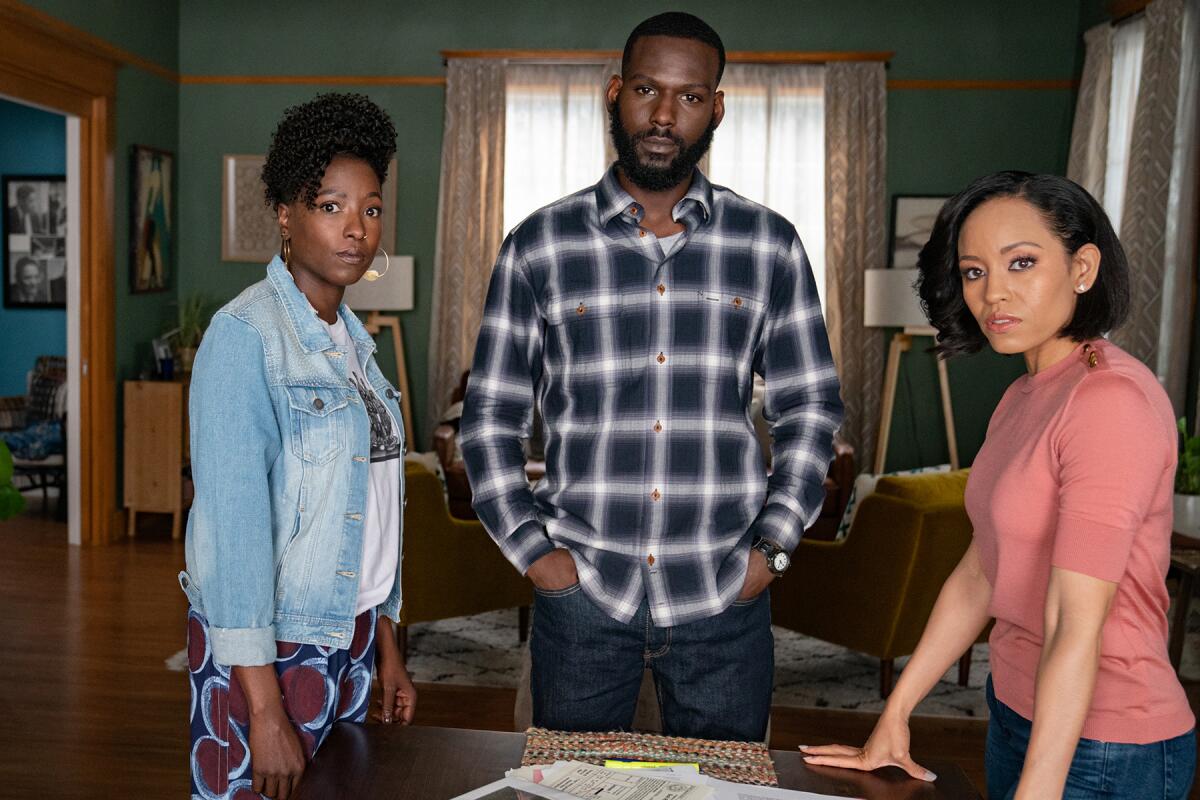
- Share via
NEW ORLEANS — Ava DuVernay’s “Queen Sugar” may come to a close Tuesday, but the Bordelon family’s mark on south Louisiana will last for years to come. DuVernay and Oprah Winfrey have been lauded for making good on DuVernay’s promise to hire only women directors for the 88 episodes of the OWN drama. But her commitment to diverse hiring practices extends to everyone on the call sheet — with ripple effects across the below-the-line community in the New Orleans area.
Since the 2016 pilot, the series has been filmed on-location; former slave plantations in Vacherie, 100-year-old oak trees in City Park and historic shotgun houses in the Ninth Ward have all been characters alongside Nova Bordelon and her siblings. Over the show’s seven seasons, the series has spent more than $117 million on local Louisiana payroll and vendor payments and has employed more than 400 cast and crew in the state each year.
In an email to The Times, DuVernay credited her fellow producers Paul Garnes and Cheryl Miller with carrying out ongoing efforts to “provide leadership without power tripping.” As the series takes its final bow, DuVernay said she is “enormously proud” of the home away from home she created for her long-running show.
On the last day of shooting, New Orleans Mayor LaToya Cantrell declared July 20, 2022, as Queen Sugar Day and gave DuVernay the key to the city. The filmmaker immediately thanked the local crew for showing her around and introducing her to their favorite places in the Crescent City. “It’s the crew members that are the closest to my heart,” she said.
The Times spoke with three women whose careers were significantly affected by their work on “Queen Sugar.” All agreed that the atmosphere on set was that of a close-knit family, whose lives would be forever intertwined. But they also wondered if such an experience could ever be replicated as a sustainable model for other productions in Louisiana.
“Our highest hope is that it is infectious,” DuVernay said.
The director and outgoing Warner Bros. Television head created a guide to diverse below-the-line talent. Studio execs tell them “nothing will ever be the same.”
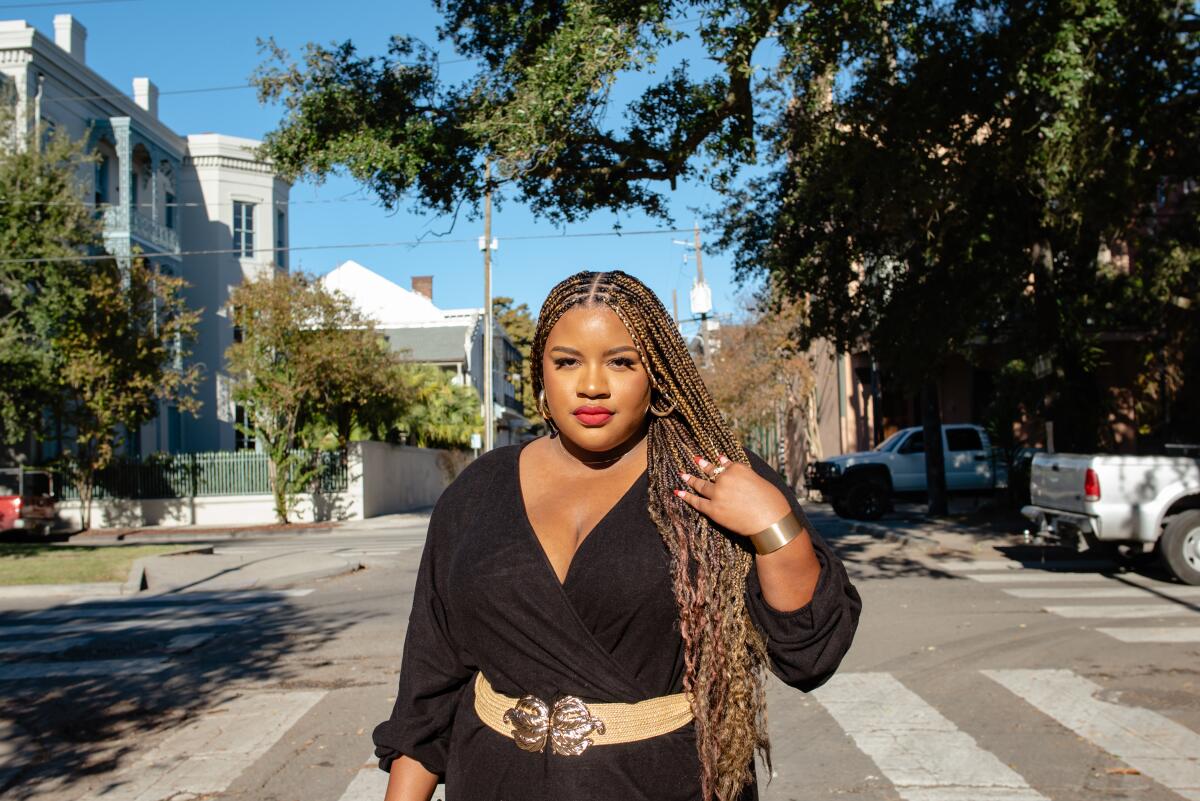
Stevee-Rayne Warren
Stevee-Rayne Warren is a program manager at the New Orleans Video Access Center (NOVAC), which facilitates community-based film industry workforce training and placement in southeast Louisiana.
“Being a Baton Rouge, La., native, I didn’t ever think that this world, this industry, was an option for me,” said Warren, 28. “If you don’t see it, you don’t know it.” She said the narrative for many in Louisiana is that if they want to work in the film industry, they need to move to New York City or Los Angeles.
“When ‘Queen Sugar’ came and created all of these new jobs and all of this new opportunity and a sustainable workflow, it set a foundation and a tone that there is a workforce here,” Warren said. “This is a legitimate production hub.”
The program manager said the series stood out among local productions for its longevity. “Louisiana is such a beautiful and vibrant place,” Warren said. “Being able to film here and count on there being a workforce here sets it up for a beautiful gumbo pot of an experience.”
In 2015, before “Queen Sugar” began filming, Warren was a self-described “young and enthusiastic intern” at NOVAC. She logged into the company’s Twitter account and DMed DuVernay directly, telling her that she was excited to see she’d be filming locally and offering NOVAC as a resource for vetted, trained individuals. DuVernay liked the message, followed NOVAC back, but didn’t reply. A few days later Warren’s boss got a call from line producer Miller asking for crew recommendations.
“Queen Sugar” hired a few people NOVAC recommended and then deepened the relationship in subsequent seasons. The series hosted set visits for trainees and sourced paid interns from NOVAC, retaining many of them as full-time production assistants. The practice of turning interns into PAs is one NOVAC replicated with other productions, pointing to “Queen Sugar” as proof of concept.
On one of the set visits hosted by production manager Garnes and producing director DeMane Davis, NOVAC trainees spoke with a production assistant named Cierra Glaude. Warren recounts that one student, Merlin Ramsey, asked Glaude her long-term dream. “One day, I’m going to direct an episode of ‘Queen Sugar,’” she told him.
A few years later, Warren said Glaude ran into Ramsey while filming an episode for the fifth season of the series. Ramsey was now a COVID compliance PA for the show. “You told me you wanted to direct,” Ramsey told Glaude,“ and now we’re on the episode you’re directing.”
Warren stressed that the mentorship provided by people like Glaude, Davis, Garnes and Miller was crucial for locals. “It’s different when you’re experiencing mentorship with someone who looks like you or has a similar life experience as you,” Warren said. “I’ve not been on other sets that feel and look like ‘Queen Sugar’ when it comes to the talent that is behind the camera specifically. You don’t see a lot of people of color.”
Because below-the-line jobs are freelance by nature, Warren said, “relationships are everything”: “That has led this industry to be one-dimensional, white-male-dominated. We’re trying to change who can receive those resources, those opportunities to gain those relationships.”
After the pandemic decimated the restaurant industry in New Orleans, for instance, NOVAC recruited hospitality workers to become production assistants, and “Queen Sugar” offered opportunities generously. “That has really changed the game in terms of letting people in.”
“I recruit on a national scale,” Warren said. “I’ve worked on projects in 30 different cities. I recruit for Oscar-nominated, Emmy-nominated productions, and it all started with a DM.”
Christina Applegate and Linda Cardellini spoke to The Times about the former’s multiple sclerosis, the ‘ambiguous’ ending of Netflix’s dark comedy and more.
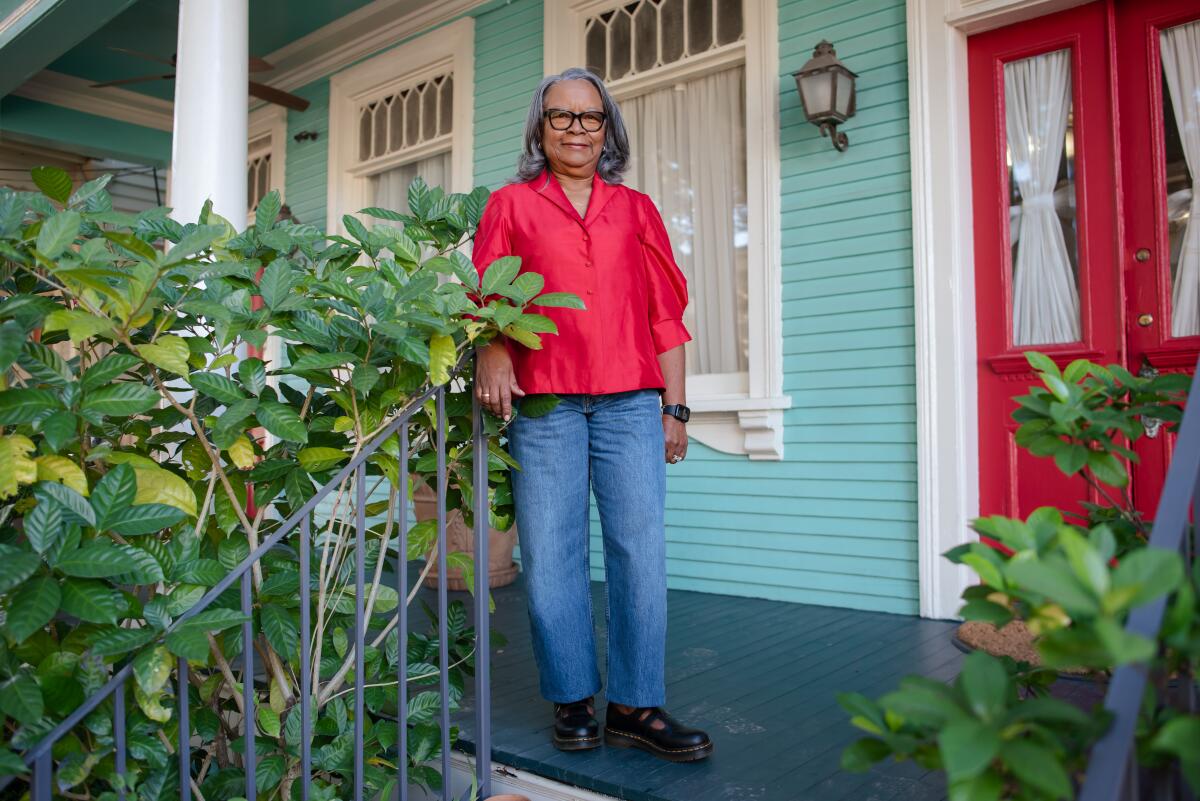
Aurora Knox
Aurora Knox has been a seamstress and tailor for 50 years in New Orleans. She’s made custom dresses, bespoke Mardi Gras costumes, ornate gowns for carnival balls and marching band uniforms. “Everything from A to Z,” the 78-year-old proclaimed.
Knox said that she was one of the first people to return after Hurricane Katrina hit in 2005. She said that in the wake of the devastating storm and levee failures, there weren’t many people in the city who had her skill set — so she was called upon to help a costume designer on a film set in 2007. By 2016, she’d worked on a handful of sets when designer Caroline Marx asked her to help out on “Queen Sugar.”
The tailor is a key example of a DuVernay-style hire. “The problem you get into in our industry is that the same people are often slotted into the same jobs without exploration of other cultures and ages and abilities and voices,” DuVernay wrote in an email. She said it was important to her that the crew be a “cross section of qualified people.”
Knox said this quality of people on the series made her “get along with everyone I came in contact with.” And it was so personal for her, she even hosted fittings in her house during the first season. She was a tailor on the show from beginning to end.
Knox said she still misses it daily and throughout her interview reiterated that it felt like “one big, happy family.”
“’Queen Sugar’ was like going home every morning,” she said. “There wasn’t a day that I felt like, ‘Ugh, I don’t want to go to this place today.’”
She said she felt the series gave her an opportunity to work on her craft to the best of her ability. “It affected my life in a great, big, wonderful way.”
“Hopefully, the next show I work on will at least come close to it, and that would mean I’m a very happy person,” Knox said. She’s currently taking a break from working but said she stays in touch with people from the series. “I think they’re friends for a lifetime.”
Her only complaint is that there aren’t more episodes to work on. “Everybody that I talked to would love to have one more season, and that includes me.”
The complete guide to home viewing
Get Screen Gab for everything about the TV shows and streaming movies everyone’s talking about.
You may occasionally receive promotional content from the Los Angeles Times.
Desiree Stevenson
Assistant director Desiree Stevenson can measure her life milestones by seasons of “Queen Sugar.”
At the start of Season 1, Stevenson worked directly with DuVernay, which for a second-second AD felt very impactful. After that season concluded, she got married. When Season 2 began, Stevenson was moved up to second AD without even asking for a promotion. In the beginning of Season 4, she became pregnant with twins.
“I went through the first trimester plus and never missed a day of work because I had such a great support system there,” recalled Stevenson, 39. She said she remembers being a “hungry monster” at the time and having “transpo” bring her McDonald’s or fulfill other food cravings.
By the time Season 5 rolled around she was promoted once again, this time to first AD. “That was something that I had never even really imagined for myself,” Stevenson said. “But here’s a group of people that thought that I was good enough, wanted me to do it, and weren’t going to take no for an answer.”
Stevenson juggled her new responsibilities with being a working mother of infant twins in a pandemic. She said that while COVID protocols made the season challenging, her transition to first AD felt “flawless.”
“It was more like a family environment that just wants you to be able to grow in a safe zone,” Stevenson said. “I could do whatever I wanted to do and there was a group of people that were going to be behind me, always helping me along the way.”
Before “Queen Sugar,” Stevenson said she was often “one of very few diverse faces on a crew set.” She described the film industry in New Orleans as a “secret club that you had to get into” until DuVernay and her team came and opened the door. Background artists who would come in for a day of work would wind up becoming a part of the AD staff as people who hadn’t been given a chance in the past were promoted from within.
“I’m not holding myself back anymore,” Stevenson said. The experience has inspired her to constantly seek new local people of color to train and teach. Stevenson is a part of DuVernay’s Array Crew, a database of crew members from diverse backgrounds.
“You can’t have too many excuses anymore” to not hire inclusively, Stevenson said. “Queen Sugar” proved that “if you look, you can find people.”
She’s heard from many people around New Orleans — fans and crew members alike — who say they’re devastated the series is ending.
“If you see someone on another set, it’s like seeing a long-lost brother,” Stevenson said. She and her former crew members have mini reunions occasionally and plan to watch the series finale together and “have a nice little cry fest.”
“It will leave a hole in us, but it has melded us together,” said Stevenson, who is still processing the fact that the show is over.
“I hope that this is not a unicorn,” Stevenson added. “I hope that this project wasn’t just a once-in-a-lifetime thing.”
‘Queen Sugar’
Where: OWN
When: 8 and 9 p.m. Tuesday
Rated: TV-14 (may be unsuitable for children under the age of 14)
More to Read
The complete guide to home viewing
Get Screen Gab for everything about the TV shows and streaming movies everyone’s talking about.
You may occasionally receive promotional content from the Los Angeles Times.
